How to Choose the stage wash lighting manufacturer and supplier in us?
- Introduction: Why Choosing the Right Stage Wash Lighting Manufacturer Matters
- Understand the : What Buyers in the US Are Looking For
- Key Technical Criteria for Stage Wash Lighting
- Color Rendering (CRI and TLCI)
- Lumen Output and Lux at Distance
- Beam Angle and Field Angle
- Color Mixing and Control Protocols
- Power Consumption and Thermal Management
- Serviceability and Modularity
- Certifications, Compliance, and Quality Assurance
- Business Factors: Manufacturer vs Supplier vs Local Distributor
- Comparison Table: Manufacturer vs Supplier vs Local Distributor
- Operational and Logistical Considerations for US Buyers
- Lead Times, MOQ, and Shipping
- After-Sales Support and Spare Parts Availability
- Testing, Photometric Reports, and Demo Units
- Evaluating Manufacturer Capabilities: What to Ask
- Why OEM/ODM Matters: Custom Solutions and Branding
- Case Study Snapshot: What to Expect from a Trustworthy Manufacturer
- Cost vs Value: Total Cost of Ownership (TCO) for LED Stage Wash Fixtures
- Practical Checklist: How to Decide (Step-by-Step)
- Red Flags to Watch For
- Conclusion: Make an Informed Choice
- Frequently Asked Questions
- Sources
Introduction: Why Choosing the Right Stage Wash Lighting Manufacturer Matters
Choosing the right stage wash lighting manufacturer or supplier in the US is a critical decision for theaters, touring productions, live events, houses of worship, and broadcast studios. Stage wash lighting directly affects color rendering, energy costs, heat management, and the creative flexibility of a lighting designer. Whether you need LED stage wash fixtures, OEM/ODM customization, or reliable after-sales service, this guide walks you through the practical, technical, and business factors to evaluate so you can make a decision that balances performance, cost, and long-term reliability.
Understand the : What Buyers in the US Are Looking For
Searchers seeking stage wash lighting manufacturer or stage wash lighting supplier in US usually have . They want to compare products, technical specs (CRI, beam angle, lumen output), supplier capabilities (OEM/ODM, certifications, warranties), logistics (lead time, MOQ, US warehousing), and cost. Some are procurement managers or lighting designers who need vendor reliability for tours or permanent installs, while others are event companies seeking high-value, energy-efficient solutions. Addressing all these needs helps you choose a manufacturer that supports both creative and operational requirements.
Key Technical Criteria for Stage Wash Lighting
Before contacting manufacturers, clarify the technical specs you require. Below are the most commonly evaluated technical parameters for stage wash lighting that influence visual results and operational costs.
Color Rendering (CRI and TLCI)
High color rendering index (CRI) and Television Lighting Consistency Index (TLCI) are crucial for accurate skin tones and set colors, especially for broadcast and film. Aim for CRI ≥ 90 and TLCI ≥ 90 for broadcast-quality wash lighting.
Lumen Output and Lux at Distance
Evaluate lumen output and published lux measurements at typical throw distances. A wash fixture’s ability to produce uniform coverage at the required throw determines fixture count and rigging layout.
Beam Angle and Field Angle
Wash lights typically offer wide beam angles (20°–120°) for smooth coverage. Check available beam angle options and whether the fixture uses interchangeable lenses or zoom for flexible coverage.
Color Mixing and Control Protocols
Look for smooth RGB/CMY color mixing and support for contemporary control protocols—DMX512, RDM, Art-Net, sACN—plus optional wireless control. Verify how many DMX channels the fixture uses and whether presets or macros are programmable onboard.
Power Consumption and Thermal Management
LED wash fixtures deliver significant energy savings vs halogen. Consider the fixture’s wattage, driver efficiency, and thermal design. Proper heat management extends LED life and reduces fan noise—important for studio and theater use.
Serviceability and Modularity
Modular designs with replaceable LED engines, drivers, and fans simplify repairs on tour and in-house installations. Ask how quickly spare parts can be shipped and whether the manufacturer provides exploded diagrams and service manuals.
Certifications, Compliance, and Quality Assurance
Regulatory compliance and third-party certifications protect you and your audience. For US operations, confirm that products meet the following standards where applicable:
- UL or ETL listing for electrical safety
- CE marking (for international touring or import/export)
- RoHS compliance for hazardous substances
- IP ratings for outdoor applications (e.g., IP54, IP65)
- DMX512 standard compliance (USITT DMX specification)
Manufacturers with ISO 9001 quality systems and documented test procedures (photometric testing, thermal cycling, salt-spray for outdoor fixtures) are preferable.
Business Factors: Manufacturer vs Supplier vs Local Distributor
Decide whether you want to buy directly from an OEM manufacturer, through an authorized US distributor, or from a local rental/supply company. Each option has trade-offs in price, lead time, warranty handling, and customization.
Comparison Table: Manufacturer vs Supplier vs Local Distributor
| Factor | Direct Manufacturer (OEM/ODM) | Authorized Supplier/Distributor | Local Distributor / Rental |
|---|---|---|---|
| Price | Usually lower per unit (esp. larger orders) | Mid (adds margin for service/support) | Higher (short-term rental/pricing) |
| Lead Time | Longer if overseas (manufacturing & shipping) | Faster if stocked in US warehouse | Immediate availability |
| Customization | Best (OEM/ODM options) | Limited | Minimal |
| Warranty & Service | Direct warranty; may require overseas returns | Local service handling often available | On-site support and quick replacements |
Operational and Logistical Considerations for US Buyers
US buyers should carefully evaluate logistics and support to minimize downtime and cost overruns.
Lead Times, MOQ, and Shipping
Confirm the manufacturer’s minimum order quantity (MOQ), typical production lead time, and freight options. For overseas manufacturers, factor in shipping time (air vs sea), customs clearance, and potential tariffs. Many OEMs now offer US-based warehousing through authorized distributors to shorten lead times.
After-Sales Support and Spare Parts Availability
Ask about spare parts availability in the US and typical turnaround for repairs. A reliable supplier should provide clearly documented warranty terms and an authorized repair network or the option to ship parts directly.
Testing, Photometric Reports, and Demo Units
Request IES/photometric files, spectrometer reports, and demo units for in-person testing when possible. Accurate photometric data allows you to pre-visualize coverage in lighting design software and avoid costly surprises during setup.
Evaluating Manufacturer Capabilities: What to Ask
When contacting potential manufacturers or suppliers, use this checklist of high-value questions to assess fit:
- Do you offer US-based stock or warehousing, and what are typical delivery times?
- What certifications does the product hold (UL/ETL/CE/RoHS)?
- Can you provide IES files, CRI/TLCI reports, and photometric charts?
- What is the warranty period and what does it cover? How are warranty claims handled in the US?
- Do you support OEM/ODM customization (logos, firmware, power input variations)?
- What is your annual production capacity and factory testing procedures?
- Can you provide customer references or case studies for US projects?
Why OEM/ODM Matters: Custom Solutions and Branding
OEM/ODM partnerships let you tailor fixtures to your technical and branding needs — firmware behavior, housing color, powerCON or Edison connectors, and custom optics. If you require custom software or fixture parameters for a touring rig or permanent installation, choose a manufacturer with proven ODM experience and a documented development timeline.
Case Study Snapshot: What to Expect from a Trustworthy Manufacturer
Example manufacturer profile (based on industry best practices):
- Founded 2008, factory area ~10,000 m², annual capacity ~100,000 fixtures
- 80+ patents or documented IP in lighting tech and optics
- ISO 9001 quality management, UL/ETL tested batches, full photometric lab
- OEM/ODM services with prototyping, firmware customization, and long-term spare parts commitments
LQE — with a production base covering about 10,000 square meters, the ability to produce around 100,000 fixtures annually, and 80 national patents — matches the profile above and demonstrates the scale and IP capacity you should look for when choosing a stage wash lighting manufacturer for professional applications.
Cost vs Value: Total Cost of Ownership (TCO) for LED Stage Wash Fixtures
Upfront price is only part of the cost picture. Assess total cost of ownership, including energy consumption, lamp/LED replacement, maintenance, and warranty claims. LEDs typically consume 50%–80% less energy than halogen fixtures and have lifetimes of 25,000–50,000 hours versus 2,000 hours for traditional lamps. Energy savings and reduced maintenance often justify a higher initial investment.
Practical Checklist: How to Decide (Step-by-Step)
Use this quick scoring checklist when comparing manufacturers or suppliers:
- Technical fit: CRI, lumens, beam angle — Pass/Fail
- Compliance: UL/ETL/CE/RoHS — Must-have
- Lead time & logistics: ≤ required schedule — Score 0–5
- Warranty & SPares in US: local support — Score 0–5
- OEM/ODM ability for future custom needs — Score 0–5
- References & case studies for similar US projects — Pass/Fail
- Price & TCO analysis (energy + maintenance) — compare totals
Choose the supplier with the highest combined score and a clear plan for after-sales support.
Red Flags to Watch For
Be cautious if a prospective manufacturer or supplier:
- Cannot provide photometric IES files, CRI/TLCI data, or lab test reports.
- Has unclear warranty terms or no local service center in the US.
- Refuses to share references or case studies for similar projects.
- Promises unrealistically fast lead times without stock evidence.
- Uses ambiguous technical specs (e.g., high output) without lumen or lux charts.
Conclusion: Make an Informed Choice
Choosing the right stage wash lighting manufacturer or supplier for the US market requires balancing technical performance, compliance, logistics, and long-term serviceability. Prioritize suppliers who can prove product performance with test data, provide transparent warranty and spare-parts support in the US, and offer the OEM/ODM flexibility you might need for custom projects. LQE’s manufacturing scale, patent portfolio, and experience in producing middle- and high-end digital stage lighting make it an example of the kind of partner to consider when sourcing reliable, cost-effective stage wash lighting at scale.
Frequently Asked Questions
What certifications should I require for stage wash lighting intended for US venues?You should request UL or ETL listing for electrical safety, RoHS for hazardous materials, and DMX512 compliance for control protocols. CE is useful if equipment will tour internationally.
How long do LED stage wash fixtures typically last compared with halogen fixtures?Modern LED fixtures typically offer 25,000–50,000 hours of rated life, far longer than halogen lamps that commonly last around 2,000 hours. This lowers maintenance and replacement costs substantially.
Is it better to buy directly from a manufacturer or through a US distributor?Buying directly from an OEM can reduce per-unit cost and allow customization, but distributors often provide faster delivery, local warranty handling, and immediate spare parts. Choose based on priorities: price and customization vs speed and local support.
What are the most important specs to check for stage wash lighting?Key specs are CRI/TLCI (aim ≥90), lumen output and lux at throw distance, beam/field angle, control protocols (DMX/RDM/Art-Net), power consumption, and IP rating if outdoors.
How much energy can I expect to save switching to LED wash fixtures?LEDs typically consume 50%–80% less energy than comparable halogen fixtures, depending on fixture efficiency and control strategies, which reduces operating costs and cooling requirements.
Can manufacturers provide photometric files for pre-visualization?Yes—reputable manufacturers should supply IES photometric files and spectral data so you can model fixtures in CAD or lighting-design software before purchase.
Sources
- U.S. Department of Energy (DOE) — general LED performance and energy-efficiency guidance and facts about LED lifetime and energy savings.
- USITT (United States Institute for Theatre Technology) — DMX512 protocol history and control standards.
- IES (Illuminating Engineering Society) Lighting Handbook — photometry and measurement best practices.
- Industry manufacturer technical datasheets and photometric reports (representative examples used for technical ranges).
- Common industry practices for warranty, OEM/ODM services, and factory capacities as reported by established stage lighting manufacturers.
How to Choose the beam moving head light manufacturer and supplier in us?
Top 10 professional stage lights Manufacturers and Supplier Brands in us
Why choose LQE as your led stage lights supplier
Top 5 spot moving head profile light factory Company List and Products Compared
1000w
What Is the Warranty Offered by LQE Lighting?
LQE lighting offers a comprehensive 1-year warranty and spare parts on its products, giving customers peace of mind and investment protection.
Does LQE Offer a Stage Light Design Solution?
LQE experienced team glad to supply a stage lighting configuration design solution or suggestion for projector who don’t have much experience in lighting design, project, theatre and studio.
Distributor
Do you offer OEM/ODM support for distributors?
Yes, as a professional OEM/ODM manufacturer, we support brand customization, including logo printing, packaging design, and even custom features based on project needs.
Can LQE help with product training and technical guidance?
Absolutely. We offer remote training sessions, user manuals, installation guides, and continuous technical support to help your team understand and sell our products with confidence.
What support does LQE offer to its distributors?
We provide our distributors with a full package of support, including:
Marketing materials and product catalogs
Technical training and manuals
Fast-response after-sales service
Exclusive regional pricing and policies (for qualified partners)
Priority access to new products and updates
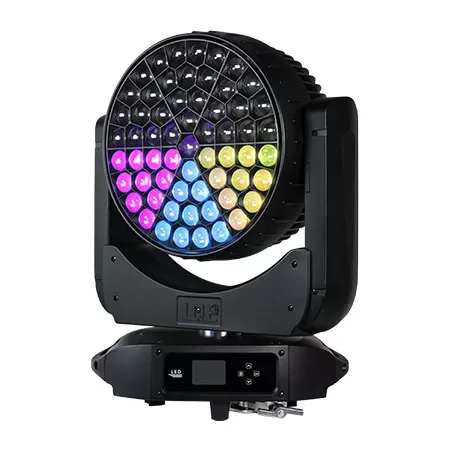
1000w 61x40w RGBW Stage Moving Head Wash Light LW1000
1000W 61x40W LED RGBW Mulichips Moving Head Wash Lights with Zoom (5°–50°), Covering Large Range and Long Distance. Designed to deliver a 5°–50° ultra-large zoom range to achieve a greater wash effect, illuminating stages and events with stunning lighting effects.

600w 19x40w RGBW Stage Moving Head Wash Light LW600 Zoom IP20
600W 19x40W LED RGBW Mulichips Moving Head Wash Lights with Zoom (5°–50°), Covering Large Range and Long Distance. IP20: Designed to deliver a 5°–50° ultra-large zoom range to achieve a greater wash effect, illuminating stages and events with stunning ring control lighting effects.

LED Moving Head Stage Wash Light LW200Z
The versatile moving head stage light provides a powerful lighting solution for theaters, concerts, and large outdoor performances. Suitable for theaters, TV stations, entertainment stages, and large outdoor performance scenes.
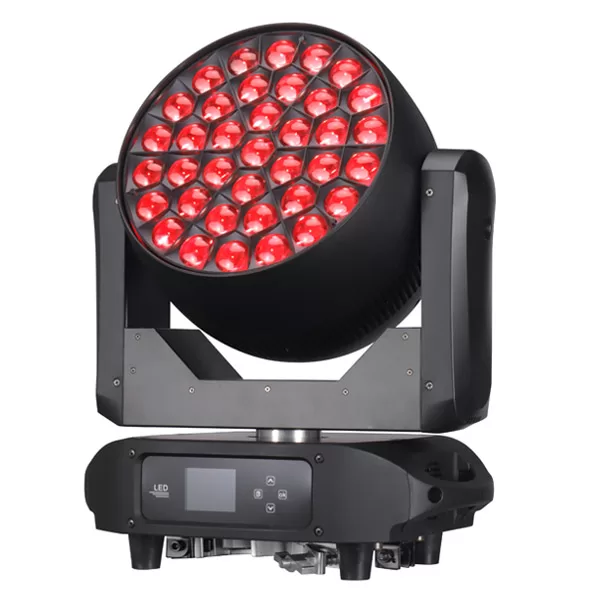
800w 37x40w RGBW Stage Moving Head Wash Light LW800
800W 37x40W LED RGBW Mulichips Moving Head Wash Lights with Zoom (5°-50°), Covering Large Range and Long Distance. Designed to deliver a 5°–50° ultra-large zoom range to achieve a greater wash effect, illuminating stages and events with stunning ring control lighting effects.

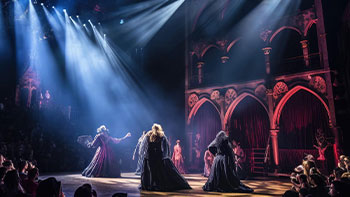
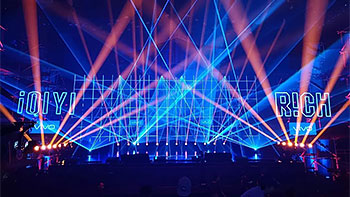

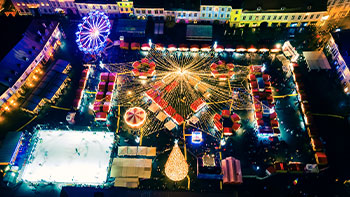








Linkedin
YouTube
Whatsapp: +8618924548390
TikTok